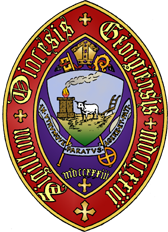The Creek Nation who welcomed colonists to the high bluff on the Savannah River were a relatively new political development in response to a crisis. That nation arose in an effort to unite indigenous peoples with a variety of languages and traditions after the mound-building societies that preceded them collapsed with the deaths by smallpox brought in the 16th century by Spanish Conquistadors. The new Creek Nation welcomed trade with Europeans. By the 1750s roughly 60,000 deer skins a year left Charleston and Savannah for English factories that used them to fashion breeches, gloves, and book covers. Commerce thrived until a steep decline in the deer population left the Creeks with no trade goods.
 In Georgia, the Creeks to the south and Cherokees to the north were seen not just as trade partners, but targets for missionary efforts including those by Anglicans like the Revs. John Wesley and Bartholomew Zouberbuhler. Later the Indigenous people were viewed as obstacles to be removed. The 1783 Treaty of Paris that ended the Revolutionary War set the westward boundary of Georgia as the Mississippi River. President George Washington negotiated with the Creeks the Treaty of New York in 1790 that moved the western boundary to the Oconee River just west of Athens. In 1802, politicians brokered a deal to have Georgia cede lands west of the Chattahoochee in exchange for getting what is the familiar map of the state. Georgia’s legislature spent the next 25 years calling on one president after another to make good on a pledge to “extinguish the Indian title to all other lands within the States of Georgia.”
In Georgia, the Creeks to the south and Cherokees to the north were seen not just as trade partners, but targets for missionary efforts including those by Anglicans like the Revs. John Wesley and Bartholomew Zouberbuhler. Later the Indigenous people were viewed as obstacles to be removed. The 1783 Treaty of Paris that ended the Revolutionary War set the westward boundary of Georgia as the Mississippi River. President George Washington negotiated with the Creeks the Treaty of New York in 1790 that moved the western boundary to the Oconee River just west of Athens. In 1802, politicians brokered a deal to have Georgia cede lands west of the Chattahoochee in exchange for getting what is the familiar map of the state. Georgia’s legislature spent the next 25 years calling on one president after another to make good on a pledge to “extinguish the Indian title to all other lands within the States of Georgia.”
Pioneering Georgians were mostly Baptists, Methodists, and Presbyterians with Episcopalians following later. Bibb County was created around Macon in 1822. Three years later, the Rev. Lott Jones made an exploratory tour establishing the first new Episcopal Church in the state since the Revolution. The editor of the Savannah Georgian wrote in December 1825, “Last March two years ago, it was a wilderness…and perhaps nothing characterizes its refinement more conclusively than the fact that it maintains an Episcopal minister.”
In Columbus, land surveyors poured in as the Creeks were forced west. Trinity Church followed eight years later as the town was more established. Within another four years, the parishioners had built “A beautifully appointed church of forty-six pews with carpets, hangings, marble baptismal font, a pair of elegant stoves, hanging lamps and a three thousand dollar organ of fourteen stops.”
 As anticipation built for the cruel removal of the Cherokee Nation along what is now known as The Trail of Tears, Episcopalians planned their next steps. The Episcopal Church sent the Rev. John Hunt as a missionary to Clark County. The Rev. Edward Neufville, Rector of Christ Church, Savannah, and President of the Standing Committee also made a seven-month tour of the newly opening land. He officiated occasionally, as opportunity offered, for “the scattered members of our communion and others who were destitute of regular ministration.” Neufville noted that “Clarkesville and Milledgeville present a field for Missionary labour.” The pattern continued across the state as native peoples were forced out, other denominations arrived with pioneers with Episcopal Churches established years later.
As anticipation built for the cruel removal of the Cherokee Nation along what is now known as The Trail of Tears, Episcopalians planned their next steps. The Episcopal Church sent the Rev. John Hunt as a missionary to Clark County. The Rev. Edward Neufville, Rector of Christ Church, Savannah, and President of the Standing Committee also made a seven-month tour of the newly opening land. He officiated occasionally, as opportunity offered, for “the scattered members of our communion and others who were destitute of regular ministration.” Neufville noted that “Clarkesville and Milledgeville present a field for Missionary labour.” The pattern continued across the state as native peoples were forced out, other denominations arrived with pioneers with Episcopal Churches established years later.
